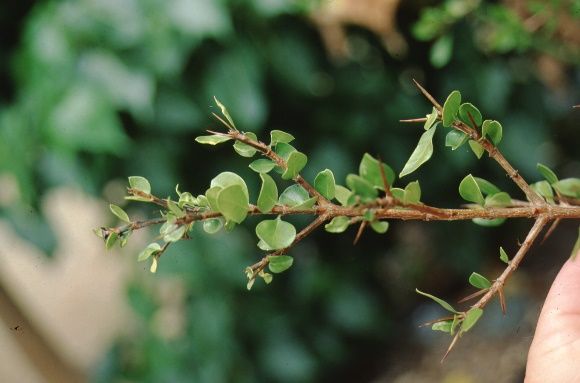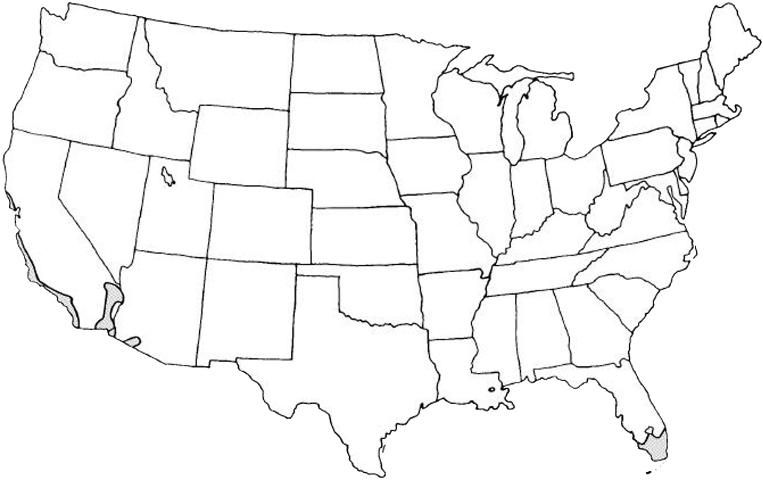Introduction
Randia aculeata has been rated by some as one of the best shrubs for the south Florida area, but it is little known. This 6 to 10 foot tall, evergreen shrub has small, spiny, leathery leaves that are clustered toward the tips of the branches. These leaves and the stiff branching habit of this plant give it a sort of geometric look. The small, white, axillary flowers produced by this plant are fragrant and occur throughout the year. The white indigoberry also has showy white fruits that give this plant a certain appeal. In the landscape this plant could be commonly used as a specimen.

Credit: Edward F. Gilman, UF/IFAS

Credit: Edward F. Gilman, UF/IFAS

Credit: Edward F. Gilman, UF/IFAS
General Information
Scientific name: Randia aculeata
Pronunciation: RAN-dee-uh ah-kew-lee-AY-tuh
Common name(s): white indigoberry
Family: Rubiaceae
Plant type: shrub
USDA hardiness zones: 10 through 11 (Figure 4)
Planting month for zone 10 and 11: year-round
Origin: native to Florida
Invasive potential: not known to be invasive
Uses: specimen; foundation; border
Availability: somewhat available, may have to go out of the region to find the plant

Credit:
Description
Height: 6 to 10 feet
Spread: 5 to 8 feet
Plant habit: round
Plant density: open
Growth rate: slow
Texture: medium
Foliage
Leaf arrangement: opposite/subopposite
Leaf type: simple
Leaf margin: entire
Leaf shape: orbiculate
Leaf venation: pinnate
Leaf type and persistence: evergreen
Leaf blade length: less than 2 inches
Leaf color: green
Fall color: no fall color change
Fall characteristic: not showy
Flower
Flower color: white
Flower characteristic: pleasant fragrance; year-round flowering
Fruit
Fruit shape: oval
Fruit length: 0.5 to 1 inch
Fruit cover: fleshy
Fruit color: white
Fruit characteristic: attracts birds
Trunk and Branches
Trunk/bark/branches: thorns present; not particularly showy
Current year stem/twig color: green
Current year stem/twig thickness: thin
Culture
Light requirement: plant grows in part shade/part sun
Soil tolerances: acidic; alkaline; sand; loam; clay
Drought tolerance: high
Soil salt tolerances: moderate
Plant spacing: 36 to 60 inches
Other
Roots: usually not a problem
Winter interest: no special winter interest
Outstanding plant: not particularly outstanding
Pest resistance: long-term health usually not affected by pests
Use and Management
The white indigoberry will flourish on well-drained sandy or rocky soils. It is quite drought tolerant and prefers to be planted in full sun. Its habit is open in the shade. This plant has a very high salt spray tolerance and is a great shrub for coastal landscapes.
Pests and Diseases
No major problems are associated with this plant.